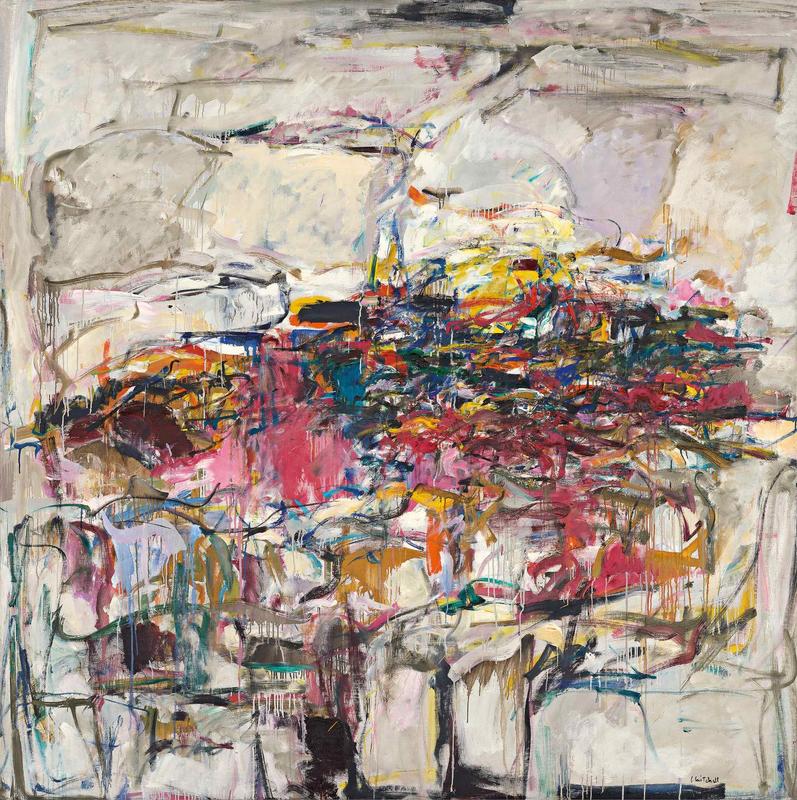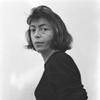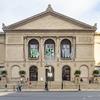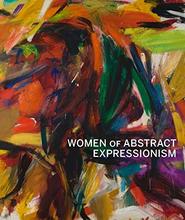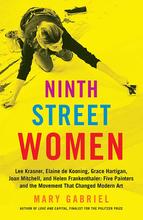More about City Landscape
- All
- Info
- Shop

Contributor
To understand Joan Mitchell’s City Landscape, you’ve got to understand that it’s meant to be felt more than it is to be seen.
Meaning, the colors and brushstrokes should invoke a feeling in you. Don’t worry about staring at this painting and not "getting it" or recognizing anything in it that you can relate to. Like much of the work of the Abstract Expressionists, the most important part of the experience is the emotion evoked.
The title of the piece gives you the only hint you’ll need, and you’ll find that your mind will do the rest of the legwork. Without the name, you probably wouldn't see a city landscape, but with it, you can begin to understand Mitchell's inspiration.
City Landscape is a prime example of Mitchell’s early style. Her colorful horizontal strokes in the midst of all of that dingy white creates a figure-ground relationship in which it’s hard to tell where the foreground and the background reside within the composition. Like when you’re stuck in traffic on the freeway and the skyline is in view, it can be hard to see where things begin and where they end.
City Landscape, and a lot of Mitchell’s early work, was inspired by landscape, nature, and poetry. All three of these things invoke pretty strong feelings in one way or another, and it seems like Mitchell was trying to capture the vibes of those three things and represent them in an abstract way that was unique to her. Poetry is probably the only written medium that people consistently claim to not understand. And that has a lot to do with emotion as well. If you aren’t tapped into the feeling the poet is trying to convey, it’s going to go over your head. Mitchell's abstract work is like poetry.
Mitchell may have died in 1992, but her poetic influence on the world of art and beyond is still felt to this day. She recently had a biography published, with contributions in the form of essays from curators and art historians, as well as literary responses to her work in the form of poems. “I love this big horny red painting” says poet Eileen Miles of City Landscape, “because it’s bitch work. It’s tooth and claw.” Eileen contributed eight poems to Mitchell’s biography, and that full circle event is truly the evidence of Mitchell's influence. Art is expression, but art is also immortality. It’s a way to document what we see and feel, in a way that is universal. Having artists working in completely different mediums respond to her work means that Mitchell’s spirit still lives on.
Sources
- The Art Story. Joan Mitchell Artworks. Accessed June 17, 2021. https://www.theartstory.org/artist/mitchell-joan/artworks/#nav
- Mr. Porter. “Partnership: Making a Muse.” September 14, 2016. https://www.mrporter.com/en-us/journal/fashion/making-a-muse-675252
- Holman, Matthew. “Lyrical Helen Frankenthaler biography and Joan Mitchell catalogue make a splash.” The Art Newspaper. March 11, 2021. https://www.theartnewspaper.com/feature/making-more-than-a-splash-helen…
Featured Content
Here is what Wikipedia says about City Landscape
City Landscape is the title given to a series of several abstract expressionist oil paintings by 20th-century American painter Joan Mitchell. Art critics have described the abstract works in the series as cityscapes, with their colorful, central elements each resembling a grid found in urban planning. The central density of painting techniques and the outer spaces are both widely-critiqued.
The most prominent version is held by the Art Institute of Chicago and has been frequently lent out on exhibition for retrospectives of her work. This is a work that is associated with Mitchell as an exemplar of her work. Mitchell produced many artworks of a similar style during the mid-1950s. Rockefeller University sold one work in the series in 2024, receiving just over $17 million for it at auction after deciding to list it to fund scientific research. Both well-known versions were painted in 1955 and acquired from the Stable Gallery in 1958 after limited exhibition exposure.
Check out the full Wikipedia article about City Landscape

